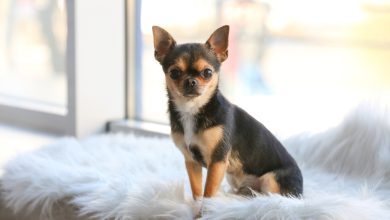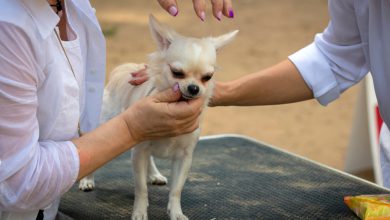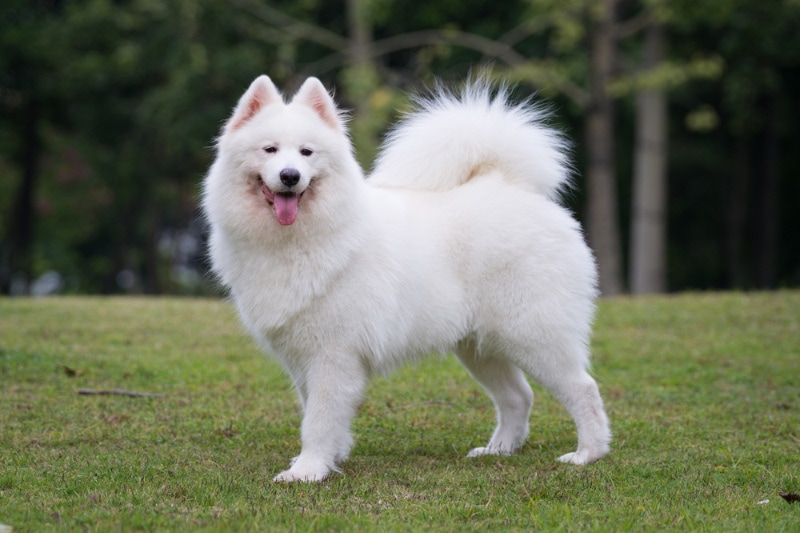
The Samoyed is a loving, playful, and fun dog. They make excellent pets, but they’re perhaps more suitable for an active family who can give them plenty of attention and outdoor exercise. They’re also prone to being very vocal and might not be the best option in areas where noise is a concern.
Like all puppies and dogs, a Samoyed needs to be properly trained when you first adopt them. Though they’re very affectionate toward just about anyone and get along well with children, their tendency to be so “happy go lucky” can lead to some owners overlooking their training needs. This can result in a dog that refuses to listen or follow basic commands. In turn, this can get them in trouble.
There is no secret unlock code for training a Sammie. The best results come from patience, persistence, and consistency. Below, we provide 12 tips to help ensure you have the best chance of success when training this working breed.


About the Samoyed Breed
The Samoyed is an ancient breed, first reared by the Samoyede people of Siberia. The dog was raised to herd cattle, pull sleds, hunt game, and perform other tasks required by families. As a working dog, the Samoyed also had to live in very close quarters with the family, often sleeping with their handlers to keep the family warm at night. While the Samoyed’s duties may differ today, the breed has retained many attributes that made it such an important part of the Spitz family.
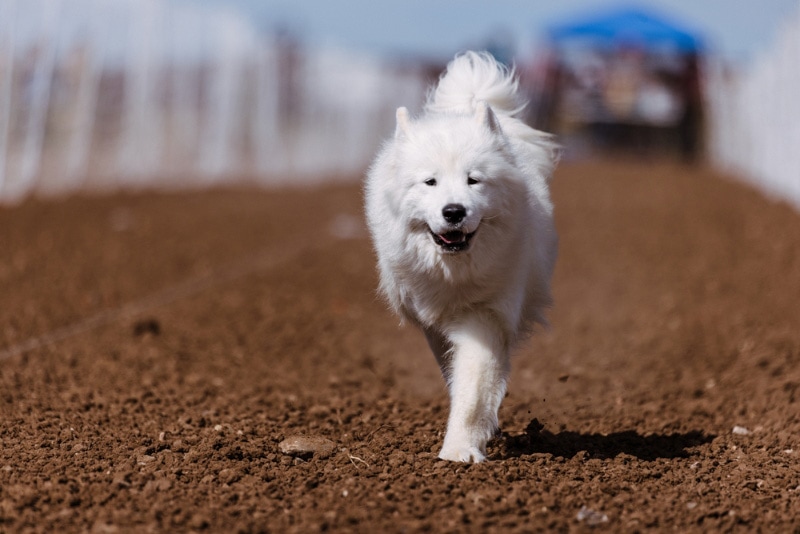

Are Samoyeds Easy to Train?
Having been raised as sled-pulling dogs, Samoyeds are full of energy. They are also very receptive to training, typically looking to help with jobs and tasks to entertain themselves. This combination means training needs to be well structured, and owners need to provide tasks and reinforce positive actions with positive rewards.
They are intelligent and loving and will work for their owners. Therefore, Sammies can be trained relatively easily. The AKC ranks their trainability at four (on a five-point scale) 1, leaning heavily towards being “eager to please.”


The 12 Samoyed Training Tips
Correcting unwanted behavior, rewarding positive behavior, and persisting with your training efforts are considered the “holy trinity” of training dogs, and Samoyeds are no exception to this rule. Below are some tips to help ensure that your efforts are properly rewarded.
1. Start Young (For Puppies)
Dogs are at their most receptive when they are young puppies. They will be more likely to learn and remember the commands you teach, and the training you undertake when your Samoyed is young will set you up for a lifetime of positive behavior.
Ideally, you should start basic training as soon as a puppy leaves their mother and you take them home. Failing this, start as soon as possible, even with basic training. House training, crate training, teaching your puppy not to jump up, and discouraging unwanted behaviors are some of the first training steps you will take.


2. Socialization
Socialization means introducing your puppy to other dogs, new people, and new situations. This not only helps your dog get used to other types of animals and people, but they are less likely to become scared or anxious when they encounter something new.
Like training, socialization should start when your puppy is young and continue throughout your pup’s life. Puppy classes are a great place to start. However, keep in mind that if you adopt an adult, they may have a personality that doesn’t easily warm up to other dogs.
3. Regular Exercise
Samoyeds have a lot of energy, and if you don’t exercise your Sammie, it can lead to behavioral issues that are difficult to train out of your dog. As the saying goes, a tired dog is a good dog. Ideally, you should aim to provide around 60 to 90 minutes of exercise every day for a healthy adult Samoyed. While some of this can include intense indoor play, Samoyeds will definitely appreciate time outdoors, and they’ll likely be very appreciative of a long walk.
Samoyeds are athletic dogs that were raised to pull sleds. Some people even enter their pets in sled-pulling competitions, while others take their dogs for ski excursions. However, such athletic endeavors do require some conditioning, and they’re best undertaken by healthy adult dogs.
Puppies do best on exercise centered around training and multiple play sessions. They shouldn’t be taken for fast-paced runs, and they shouldn’t be tasked with pulling sleds (or other heavy objects) when they’re still growing.


4. Be Consistent
Consistency is critical to positive training. If you want to stop your dog from getting up on furniture, you need to consistently tell them no and praise them when they sit or lay calmly next to the furniture. Similarly, you must praise positive actions like sitting and being patient consistently.
5. Be Clear
Your commands need to be clear, and you need to stick to the same commands each time. While “sit” is a joint command most dog owners use, confusion can arise around other commands. If you use “down” as a command to have your dog lay down, you can’t use it as a command to get off furniture or stop jumping up.
Choose your commands, use them consistently, and ensure you speak them clearly so they are easy to understand.


6. Be Honest With Yourself
Most owners who struggle to train their dogs often pass the blame to the dog being stubborn or not adept at picking up a command. However, it’s important to note that many training shortcomings are not the fault of the dog but of the trainer. It’s perfectly fine to seek out professional trainers if you’re not confident in your abilities as a trainer for your dog.
7. Positive Reinforcement
Positive reinforcement involves praising your dog when they do something you want to encourage. This includes rewarding and praising your puppy when they respond to commands, but you can also reinforce any positive action. If your dog sits when meeting a new person, praise the action even if you didn’t ask for it. Eventually, your dog will associate that action with getting a positive reward.
8. Don’t Punish
You can teach “no” and “stop” commands and use them when your Sammie is doing something you don’t want, but they shouldn’t be used as a punishment. Rather, they should be used as a correction and a means of encouraging positive behavior that can be rewarded. Don’t scold your dog, and don’t punish them.


9. Utilize Treats
Treats aren’t just there for when your dog looks adorable. They can be a very effective training tool when used properly. However, it’s important to keep in mind that they obviously contain calories, which can quickly lead to an overweight pet if you’re not careful. It’s important to adjust the rest of your dog’s meals in accordance with the amount of treats you offer them.
10. Keep It Short
Embarking on a long training session may at times set your dog up for failure. They may become distracted and bored, eventually looking for other things to do or just walking away from you. When starting with your dog, it’s sometimes better to engage in multiple short training sessions throughout the day instead of a single long session.
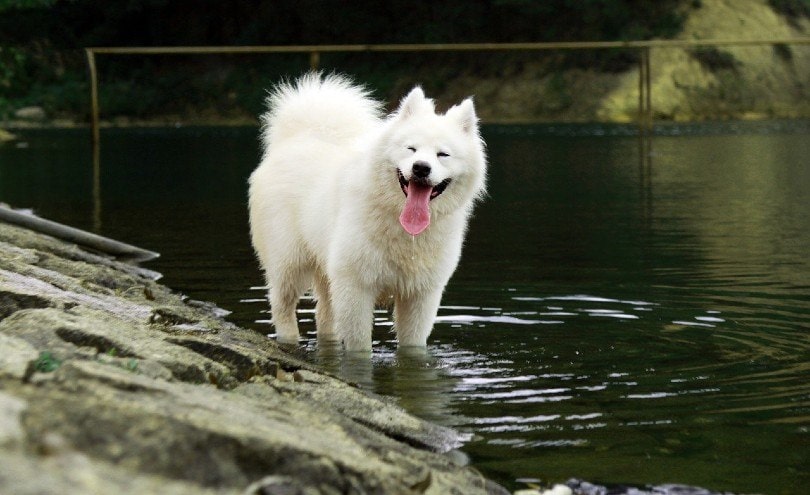

11. Consider Veterinary Input
Not all training hurdles are due to your dog being difficult to train. At times, your dog might be unwell and therefore not responding well to training sessions. If you wake up one day and realize that your dog doesn’t seem to be their usual self when it’s time for their training session, it’s important to not immediately conclude that they’re being stubborn. Your dog might be unwell, so it’s usually best to seek veterinary input if your dog just isn’t acting like their normal self.
12. Have Fun!
Above all, whenever you embark on a training journey with your dog, it’s important to keep in mind that you should embrace the challenges as they present themselves and have fun. It’s a learning experience to figure out what your dog’s idiosyncrasies are, what they enjoy most, what they excel at, and how they respond to certain situations or stimuli.
It’s also just as important to celebrate the milestones you achieve with your dog throughout the training process. Don’t lose sight of the fact that this entire process isn’t linear. You will have good days and bad days. You’ll also have great days. At times, you might not be in the mood for training your dog. At other times, it might be your dog who cuts a training session short.
Ultimately, the time you spend with your dog is forming memories and a bond for both of you. Therefore, always remember to take it easy, keep it simple, and have fun!




Final Thoughts
The Samoyed is a working dog breed with a very highly trainable streak, and as such, they’re considered very receptive to instruction. Nonetheless, training does take time, patience, dedication, and compassion.
With the correct forms of training and lots of love, your beloved Samoyed will likely be your favorite walking companion who heels on command, and they may even accompany you for athletic endeavors, such as flyball, agility, or sled pulling!
See Also:
Featured Image Credit By: Chendongshan, Shutterstock

